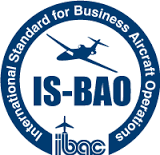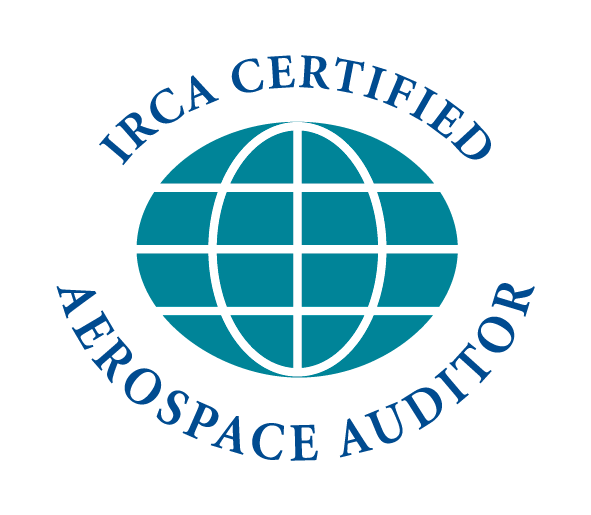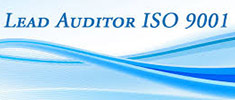Frequently Asked Questions
How many IS-BAO registered operators are there?
There are currently approximately 700 registrants located in 35 countries.
Is this is a new program?
The IS-BAO program has been in existence since 2002.
Is the program recognized by any governments or regulatory bodies?
IS-BAO registration ensures conformance to ICAO standards for privately operated large or turbojet aircraft. Several states that have incorporated these standards into their regulations recognize IS-BAO as and acceptable means of compliance.
My operation already has a safety program and SOPs. Why do I need IS-BAO?
The Safety Management System (SMS) is based on ICAO standards and is a comprehensive, measurable system that integrates all aspects of the flight department operation. Additionally, the operations and maintenance standards are based on best operating practices used by worldwide business aviation operators.
Our flight department does not fly internationally. Why do I need IS-BAO?
If you don’t operate internationally your department does not have to use the IS-BAO standards based on ICAO standards. But, your department will benefit from the comprehensive Safety Management System (SMS) which integrates all aspects of flight department operations and the best operating practices developed by the business aviation community.
What aspects of flight department operations does IS-BAO cover?
There 13 chapters in the IS-BAO standard, each covering a different aspect of flight department operations, ranging from SMS through flight operations, maintenance and security. See (hyperlink – chapter headings) for a list of the subjects covered.
I am an aircraft charter operator (or aircraft management organization). Will ISBAO benefit my operation?
While the IS-BAO standard is based on ICAO requirements for private operations, more than 200 worldwide air operating certificate holders are current registrants. IS-BAO provides core standards that will also accommodate commercial operations standards. Importantly, the SMS is a universal system applicable to all types of operations.
We operate a single aircraft with just a few people; is IS-BAO appropriate for us?
IS-BAO is scalable for the smallest to the largest flight departments. Extensive guidance material is provided to assist all applicants in meeting the standards.
How expensive is it to implement IS-BAO?
The fee to purchase a lifetime subscription to the IS-BAO Standard is $1200 plus the audit fee which varies according the size of the department (see next question), and a small registration fee are the only financial outlays involved. The expenditure of time and effort to implement IS-BAO may require up to twelve months of part-time effort by members of flight department.
What does an IS-BAO audit cost?
Audit fees vary depending on the experience of the auditor and the size and complexity of the flight department. The operator and auditor establish a mutually acceptable price for the audit during the contracting process.
Is there an audit registration fee?
Once the IS-BAO Audit Manager has approved the audit report the operator submits a registration application to which a fee of $750 applies.
My flight department already has a good operations manual. Do we have to write a new manual?
We encourage operators to keep their existing manual but revise it as needed to accommodate the IS-BAO standards.
Do you have an off-the-shelf manual?
While there may be common elements between each operators’ manual, the intent of the manual is to reflect your particular operation. Therefore, the manual will be unique. An auditor will be able to determine if an operator has a boilerplate manual that does not specifically describe their operation.
Who will need to attend the online meetings?
Typically, we coordinate with one individual assigned to develop the Flight Operations Manual. However, we suggest that additional personnel familiar with the content to be covered attend those sessions, if available. (For example, the Director of Maintenance should attend any meetings on maintenance procedures).
Are there any subscription fees or recurring costs?
We do offer a Reissue Service, typically provided every 1 – 2 years for a fixed fee. We will update the manual according to the latest IS-BAO standards and protocols, best practices, and regulatory changes. Any additional revisions you may have will be charged at an hourly rate. We will send you a reminder to Reissue your manual a few months prior to our recommended Reissue date.
I want to implement a Safety Management System / Flight Operations Manual, but I don’t want to pursue IS-BAO registration at this time. Can I still order an FOM?
We can still work with you to develop procedures that meet your needs. We start with an IS-BAO compliant manual, but we can remove any items that you choose not to incorporate. However, these items will need to be addressed if you plan on conducting an IS-BAO audit in the future.
How long does development take?
We work around your schedule, so the development time will vary from operator to operator. However, the average development time is usually 1 – 3 months, which includes the online sessions, time for you to review the document, and additional revisions, if needed.
How soon after the manual is developed can I schedule an IS-BAO audit?
Unless you have specific regulatory / civil aviation authority requirements, this is entirely up to you. To ensure you are fully prepared, we highly recommend that you take time to familiarize everyone in your department with the new manual and procedures.
We already have an operations manual, but it is outdated or does not meet our requirements. What kind of options do I have?
We recommend starting over with our document, as we regularly update it to ensure it meets current IS-BAO protocols and regulatory requirements. If there are certain sections of your manual you would like to retain, we can incorporate them into the new manual.
We already have an existing manual that is serving our needs. We want to develop and implement an SMS. What is the best method?
We can provide SMS procedures through a standalone manual, however we encourage operators to include these procedures in their existing operations manual. SMS is an integrated approach to identifying and managing risks and involves the entire department.
How do we revise the manual in between reissues?
You can send us revisions at any time. These revisions will be invoiced at an hourly rate. Alternatively, you can use the Company Directive process outlined in your manual. Simply complete the one page form detailing the change, then send it to everyone in the department and require them to acknowledge the change (Read & Initial). During the next Reissue, these Company Directives will be incorporated into the appropriate sections of the manual.
I want to develop a manual, but I also don’t want to limit the flexibility of our operation. How can I do this?
Generally, IS-BAO only outlines the items an operator needs to address and does not specify how this is to be accomplished. In many cases, as long as an operator meets the requirements of the State of Registry, they will meet the IS-BAO requirements. Additionally, IS-BAO provides a deviation process, so you may deviate from your manual as long as a risk assessment and analysis is conducted and the deviation is in accordance with any applicable regulations.
We use another vendor’s software to manage our SMS functions. Are you able to write the manual to this software?
The SMS section of the manual describes general procedures and concepts rather than explicit instructions to complete a form, submit a flight risk assessment tool, etc. However, we are able to modify this section to describe the system you have in place, whether paper-based or electronic. We will usually ask you to provide information about the system, such as form names or specific processes that are in place to review submitted forms.
We operate aircraft on multiple registries. Can we have a single manual for all of them?
As long as the appropriate civil aviation authorities have approved it, we can develop the manual to accommodate multiple registries. We have already done this with several operators, across many different registries, including U.S./Bermuda, Bermuda/Cayman, and Bermuda/South Africa. Typically, the manual is written to one particular registry, with any differences in requirements clearly marked for ease of reference.
We already have enough paperwork. Why do we need additional forms?
We understand the burden and difficulty in meeting the various regulatory requirements while providing your passengers with a professional, safe, and efficient operation. The new forms may seem demanding, but they only need to be completed consistently, not constantly. In other words, as long as everyone is completing them under the same conditions, they do not need to be done after every duty day. We can work with you to modify the forms based on your needs to ensure it remains easy to contribute while still providing enough data for a functional and well-informed SMS




